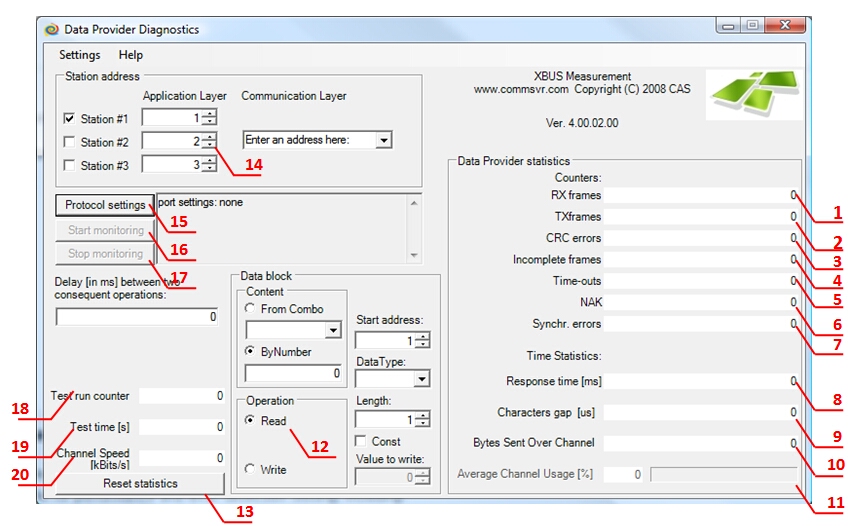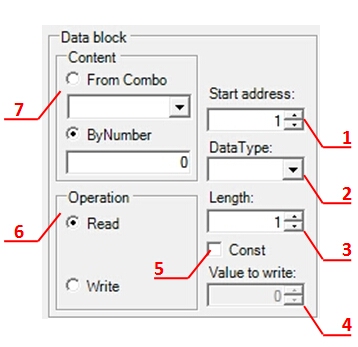Data Provider Diagnostic |
A tool for testing communication over Data Provider with slave units.
Works as master for Data Provider
Useful for performance and error-detection testing, including:
Response time measure of slave module.
Interframe and interchar measuring in the response.
Indication of the quantity of errors occurring.

number of complete received frames
number of sent frames
number of CRC errors
number of incomplete frames
number of timeouts
number of received NAK (negative acknowledge)
number of synchronization errors
waiting time of the first character in response (minimum/average/maximum)
waiting time of a character in response frame (minimum/average/maximum)
amount of sent and receives bytes
average channel usage
operations parameters (please see below)
statistic reset
stations parameters (this program allows to test three stations simultaneously), user sets the number of stations and addresses
protocol configuration, push to open the window (to read more about this configuration see the configuration of the Protocol in this topic: Using NetworkConfig to configure the network)
start the test
stop the test
test run counter (cycle: request + all the retries + reply)
time of the test
speed of the channel

starting requested address
data type of the received data
number of read/written flags or registers (this value is changed depending on setting in item 5)
value to write
if this checkbox is checked, the client always requests the same amount of data; if no, the amount of data is changed in loop starting from the value set in item 2 to 1.
operation selection: read/write
data type selection depending on the address space of the device (i.e coils, holding registers)